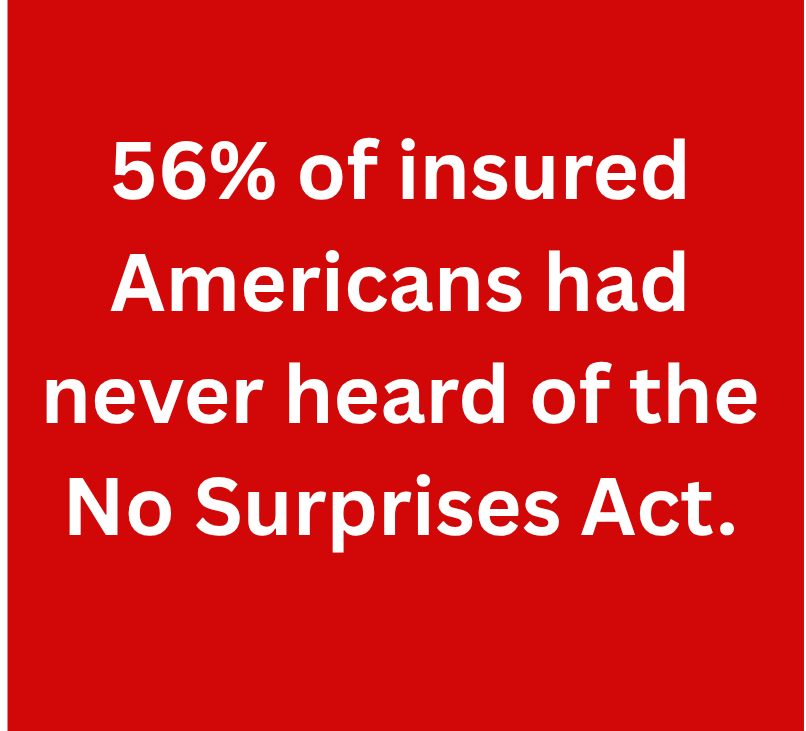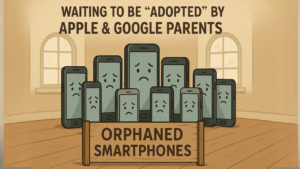Intro
Imagine getting emergency care—focused on getting help, —and ending up with a bill for $2,000 because the anesthesiologist or ambulance wasn’t “in network.” Most people would agree that thinking about in network compliance is not something going through your head when taking a loved one to the ER.
That’s exactly the scenario the No Surprises Act (NSA) was created to stop. And yep, you guessed it—many Americans haven’t heard of it yet.
Americans Support It. But Don’t Know It Exists.

A 2023 Harris Poll found that 88% of Americans support the law (once they learn what it does), but only 41% had even heard of it. A 2022 Morning Consult survey went further: 56% of insured Americans had never heard of the No Surprises Act.
So we passed a popular, life-improving law—and barely told anyone.
What the Law Actually Does
The NSA protects patients from most surprise bills when they receive:
- Emergency care
- Non-emergency care at in-network hospitals but from out-of-network providers
- Air ambulance services (ground ambulances are excluded from NSA protections, although some insurers may still choose to cover them)
Instead of the patient getting stuck with the bill, providers and insurers hash it out using a process called IDR (Independent Dispute Resolution).
Impact in Just 9 Months
From January to September 2023, the law stopped more than 10 million surprise bills from ever reaching patients. By design, the NSA prohibits providers from billing patients for out-of-network charges in covered scenarios. However, in practice, you might still receive such a bill—either due to error, delay, or noncompliance. The key is knowing your rights: if you do receive a surprise bill, you can dispute it before paying. The law gives you the tools to push back.
That’s a massive win—if people knew about it.
System Overload: IDR Chaos
In those same 9 months, providers filed over 674,000 disputes using the IDR process. The system was quickly overwhelmed, leading to delays and legal challenges.
When policy meets reality, friction is inevitable. But none of that changes the fact that this law has already helped millions.
Who’s Supposed to Tell You?
- Federal Agencies: The Centers for Medicare & Medicaid Services (CMS) and Department of Health and Human Services (HHS) were tasked with public outreach and compliance guidance.
- Healthcare Providers: Must give a notice of your rights and a good faith estimate for services. Sounds great on paper—but try asking how much an elective procedure costs. Most providers can’t tell you. It’s not that it’s too complex—it’s that the system was never designed with transparency in mind. Imagine ordering dinner without a menu. That’s what healthcare pricing still feels like.
- Health Insurers: Must update your Explanation of Benefits (EOBs), comply with IDR, and notify you of NSA protections.
So Why Haven’t You Heard of It?
Poor outreach. Complex systems. And a healthcare landscape that makes profit from opacity.
Patients aren’t just left in the dark about costs—they’re left in the dark about their rights.
It’s Time to Fix That.
We need:
- Better public education campaigns—including social media, provider offices, and insurance welcome packets
- Stronger enforcement of notice requirements so providers and insurers inform patients proactively
- Transparent, easy-to-follow dispute resolution guidance for patients
- Encouragement for newly informed individuals to spread the word to friends, relatives, and coworkers—while it’s still fresh in their minds
The law works. But it doesn’t protect you if you don’t know it exists.
Let this be your moment of clarity—and a spark for action.
Learn more. Share this. Ask your providers about your NSA rights.
#HealthcareTransparency #NoSurprisesAct #MedicalBills #KnowYourRights #PatientProtection
#SystemFailure #HealthJustice #NSA #PolicyInAction




